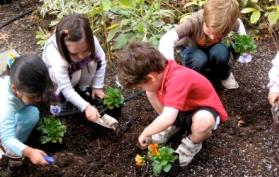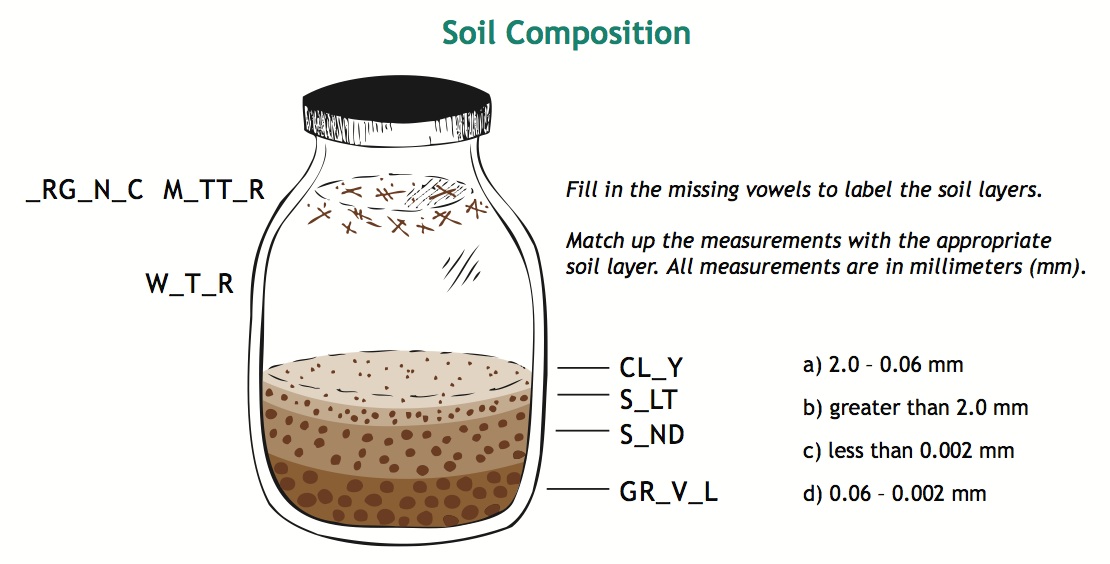 In this activity, children explore differences in soil types and composition.
In this activity, children explore differences in soil types and composition.
Doing the Activity
Who doesn’t like getting their hands a little dirty?
The next time a child in your care decides to dig a hole in the ground, turn it into an educational opportunity.
Describe to children that you will conduct an experiment to analyze the soil sample they have just collected.
As you dig and collect soil samples, ask:
- What do trees and other plants get from soil? If so, why?
- Do different plants have different soil needs?
- Describe the soil: What color is it? How does it smell? How does it feel?
Have children make a “soil shake” by placing one half cup of soil into a jar with a lid and adding two cups of water. Ask them to predict what will happen if they shake the closed jar and let it settle for a few hours. Then, try it.
Over time, soil layers will become visible. Gravel will fall first; then sand, silt, and clay; organic matter (leaves, twigs, stems) will remain floating in the water.
Have children draw a picture of the layers formed by their soil shake, or collect and test soil samples from other areas (forest, field, yard) for comparison.
Challenge children to complete the “Soil Composition” diagram, reminding them that the largest particles fall to the bottom first.

Download this Activity
Descarga la actividad en español: Estratos del suelo
Get the Full Activity
This family activity is adapted from Project Learning Tree’s PreK-8 Environmental Education Activity Guide which can be obtained through an in-person professional development workshop or online course.
A Collection of Fun, Easy to Do Outdoor Activities for Families
Our 58-page guide contains 36 family activities to try while visiting a local park, walking in the forest, or exploring your backyard—plus activities to do around your home and indoors, when you can’t get outside.
All PLT activities are copyright protected. Please remember to reproduce responsibly.
Click here for our Content Reprint and Adaptation Policy.


